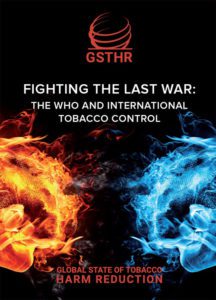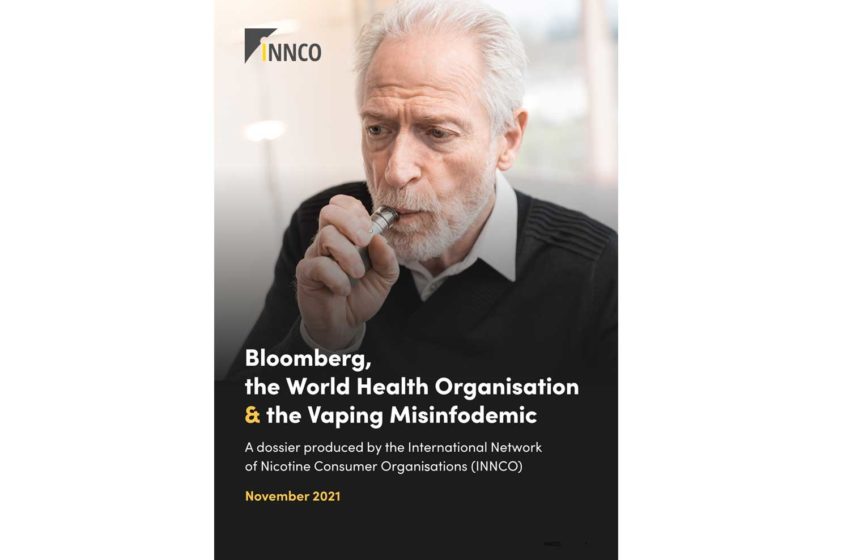The Way Forward
So, how could things be arranged to ensure a more beneficial outcome to the problem of tobacco smoking? Well, through the employment of THR, where harm reduction is defined in the report as “a range of pragmatic policies, regulations and actions that either reduce health risks by providing safer forms of products or substances or encourage less risky behaviors with an important role in championing social justice and human rights for people who are often among the most marginalized in society.” One of the most frustrating aspects of the refusal of the WHO and parties to the FCTC to embrace THR is that the WHO employs harm reduction in respect of other health issues. Such an inconsistent stance is difficult to understand, but then perhaps there is a visceral satisfaction in bleeding the patient, either actually or metaphorically, through taxation, the main weapon in the quit-or-die armory. Increasing tobacco taxation is held up as a quit-or-die success story, but, in fact, it is a strategy that further impoverishes the often less well-off while providing a boost for black marketers.
Under a section titled “What can be done? New thinking for the 21st century,” it is said that parties to the FCTC should press for more evidence-based discussions on THR and SNP. This is a nice thought, but given the history laid out in the report, I wonder if it can lead anywhere helpful. I’m sure COP participants believe they are making evidence-based decisions already, but my guess is, to get back to my original point, they are viewing only the evidence that is able to squeeze through their locked-in “moral” filters. The more alcohol they quaff together, the more they come together in the belief that nicotine is evil and shouldn’t be enjoyed. Evidence is no guarantor of success. The EU’s deadly ban on snus, a ban that defies all reason, has been upheld in the courts.
Under the same section, it is said also that a pragmatic route forward could be the establishment of a working group on THR to take the FCTC forward into the 21st century in a world where SNPs are now available. This, too, is a good thought, but again, given the history laid out in the report, one that might be difficult to pull off. Still, nothing ventured, nothing gained, and the report describes five ways in which such a working group might be able to move things forward.
One of the key starting points is said to be disaggregating combustible and more dangerous oral tobacco products from safer noncombustible products. But is this likely when, in a world where we hang onto the belief that the U.S. Food and Drug Administration is the paragon of scientific reason, that agency feels it right, and has the right, to “deem” electronic cigarettes to be tobacco products?
It is easy to become gloomy about the situation, especially when it is considered that even if a smoker is saved from a tobacco-related death through switching to an SNP, she is anyway more likely now to die of a pollution-related disease (for which there is no COP), or, slightly further into the future, the effects of a climate change event.
But, looking on the bright side, there is a powerful and growing force in support of THR, and it was on display at an event in London on the day following the launch of the Fighting the Last War report. The THR scholarship program, which is described as the jewel in the crown of the KAC, was the subject of a separate report, Tobacco Harm Reduction Scholarship Program: The First Three Years 2018–2021, which describes how the program has built an extensive network of advocates raising awareness of THR around the world.
The report is worth reading. Although I was aware of the program, I had no idea how extensive it had become. Since its launch, the program has attracted 260 applications and has taken on 75 scholars from 33 countries, 18 of whom have gone on to enhanced scholarships. But perhaps the most significant figures are those describing how 95 percent of the scholars are still working in THR, 27 percent full-time, 50 percent part-time and 18 percent on a voluntary basis.
The Oct. 28 event was an opportunity also to celebrate the life of Kevin Molloy (1957–2021), who, from 2018 until earlier this year, was head of the scholarship program.




















 Tobacco harm reduction (THR) advocates have handed out “Good COP, Bad COP” awards following the ninth Conference of the Parties (COP9) to the World Health Organization Framework Convention on Tobacco Control (FCTC) from Nov. 8-12.
Tobacco harm reduction (THR) advocates have handed out “Good COP, Bad COP” awards following the ninth Conference of the Parties (COP9) to the World Health Organization Framework Convention on Tobacco Control (FCTC) from Nov. 8-12.








